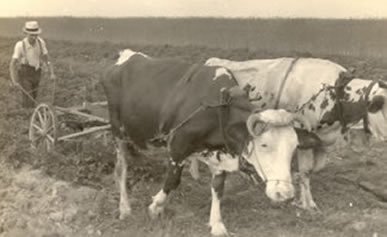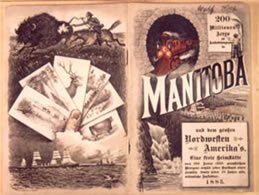Why they went
Reasons for Czech emigration to America in the 19th century
".....I was born from the poor parents in the village of Robnice in 1826, was trained in weaver craft and taken to military service in 1847, where I′ ve been in duty till 1854 and have had to go through the Italian war with all it′ s changes. I have seen beautiful lands, charming regions but also went through all hardships of war in a big quantity, I′ ve even been present at several executions of Austrian government trapped conspirators, that propagated freedom to Italian people and wanted to free this people from the Austrian tyranny...".
Quotation a letter of Jan Holecek, published in 1887 in the Czechoamerican calendar „Amerikan“.
From the 16th century until 1918, the Czech lands were part of the Hapsburg Empire. Certainly in the rural areas there were many restrictions and until 1848 most peasants were serfs of the noble families. They were registered in parishes and belonged to manors. They needed special permission to move away to, or marry somebody from another parish or manor.
The 19th century was a century of political unrest throughout Europe. The Austro-Hungarian (Hapsburg) Empire saw its feudal rule crumble evermore as the century progressed. In 1848, unrest throughout most of the Empire flamed into a revolution against the feudal system.The revolution was forcefully suppressed and failed to obtain complete independence for the different countries within the Empire. Although the revolutions failed, it forced the Government to allow a much more free society abolishing serfdom and allowing freedom of movement.


Farming in the old land....after one had completed a decade of military draft
The 19th century was also a period of large changes in other fields. The industrial revolution resulted in mechanization of production and transport methods, causing stronger competition and a lower demand for farmhands and other manual labor. The increased medical knowledge lowered mortality rates and added to the population increase of those times.
As a result, there was not enough land for new farmers and not enough work for all the sons and siblings of those lucky enough to obtain a farm.
The old Empire also had a military draft of over 10 years in the army followed by 2-3 years in the standing reserve. The Empire was involved in most of the little and larger skirmishes and wars throughout Europe. For example, the last Napoleonic Wars forced Czech soldiers to fight in several places in Europe for a cause they hardly understood and if they did, would not support to begin with.
Under those conditions, the possibilities offered by the young United States for getting free land became an attractive, if scary alternative to the lack of opportunities in rural Central Europe. For many a boy or young man, it also offered a quick way-out of the looming decade of serving in the Imperial army.
Certainly just after the revolution, emigrating was not so easy. Dreaming of leaving this restricted land and finding a new land with unlimited opportunities was easy. Letters from early emigrants, German shipping advertisements, and stories and advertisement about the free land and jobs on the railroads offered in Czech newspapers had a strong lure.


Advertisement in German for land in Manitoba (© 2) and for the travel (© 2)
At home, chances for having your own farm were zero for most, the draft loomed for young people, and even with a small piece of land poverty still was most people's future.
Although uncaring in the beginning, later in the century church and authorities were pressing people to stay home, needing the bodies for the war efforts and trying to keep the old restrictive systems in place.
Emigrating also meant jumping into the unknown, leaving most of your family and friends behind in the knowledge that you would never see them again. All in all, not an easy choice. However, many people did not see a better alternative in the old home.
Unless mentioned differently, all pictures are © collection Rozmberk Society, Friends of the Rozmberk Society, or provided under © by individual partners. In some instances, copyright is public domain or could not be established or obtained within reasonable effort.
2) Courtesy Staatsarchiv Hamburg
Design by the Bear (Robert Dulfer 2006-2016)


